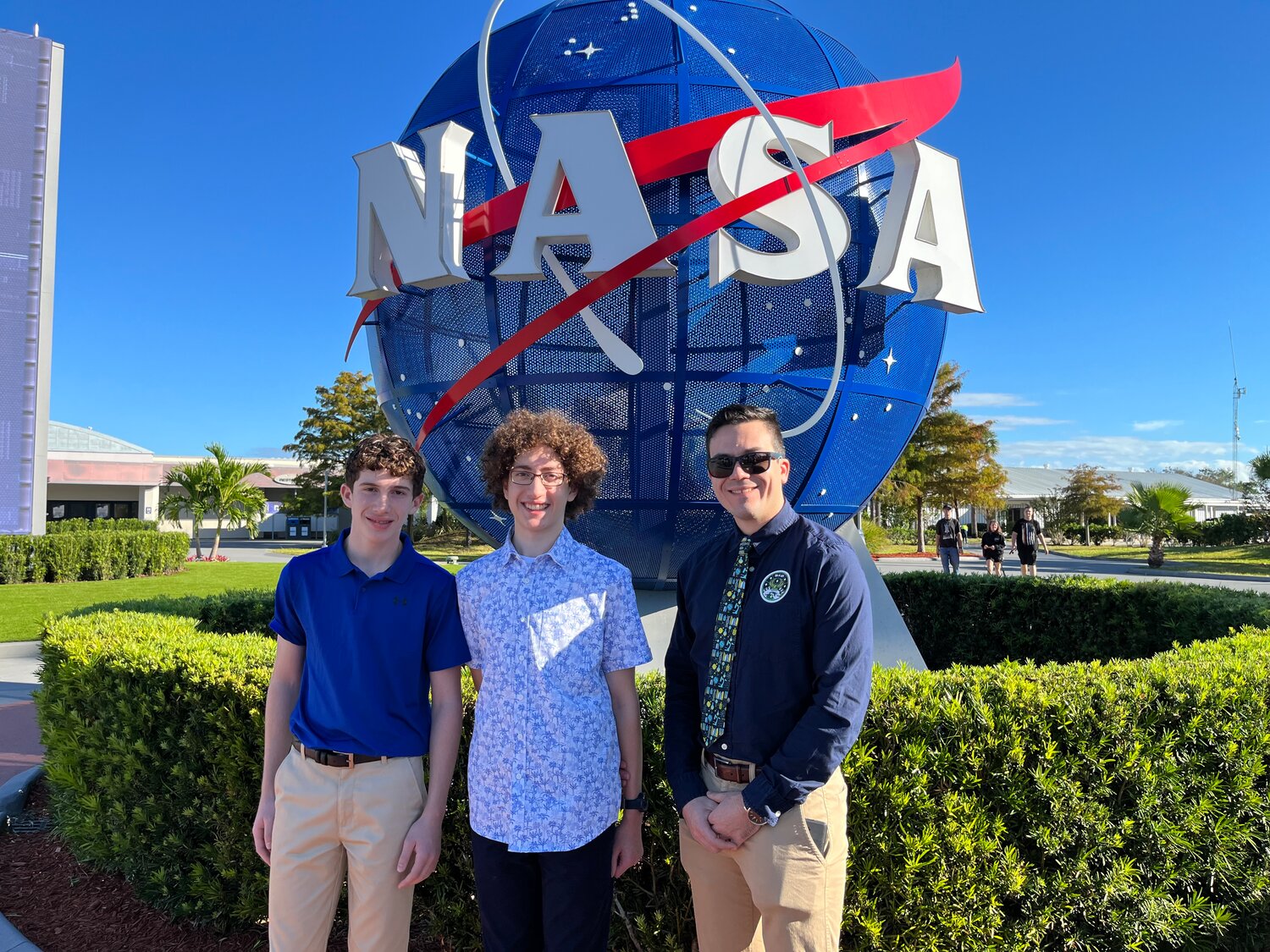Student project is out of this world
One small step for two students, one giant leap for LHS
The Kennedy Space Center was nearly pitch black, until a miniature sun was born. An impossibly large fireball lit up the Nov. 9 night sky as a rocket was propelled toward space — carrying, among other things, Lynbrook High School students Aidan Michaels and Jack Murray’s science experiment.
The two sophomores are the first students from Lynbrook to have a science project launched into space.
The program, a collaboration between NASA and the Student Spaceflight Experiments Program, gives students a rare chance to create a science experiment that is conducted in microgravity on the International Space Station. Thousands of students around the country submitted applications, but Michaels and Murray’s project was one of only 37 that were accepted to go aboard the ISS.
They headed to Florida to watch the launch, accompanied by their science teacher, Stoycho Velkovsky, who worked with Michaels and Murray.
“It felt real when we actually went down there and watched the rocket take off,” Michaels said.
“It was very, very exciting for it to actually happen, because it got delayed several times,” Murray added. “So for it to finally really happen was just really exciting. And of course, it was awesome to watch it.”
The students, both passionate about science research, wanted to create a project that was groundbreaking, but feasible.
“This project was challenging, because the experiment has to fit in there,” Velkovsky said, gesturing to a small tube about the size of a toilet paper roll. “It really, really limits the kinds of things you can do. But a limit doesn’t have to be a bad thing. It just means that you have to think about your question in a way that fits the constraints you’re given.”
After working for months with Velkovsky, Michaels and Murray decided to find out how microgravity affected the growth of wine cap mushrooms. “We thought of mushrooms because it’s easy to grow and it doesn’t require that many nutrients,” Michaels explained. “So it was a good option for us to grow in the tube, because you obviously can’t fit that much.”
The pair hypothesized that there won’t be a significant difference between the control group of mushrooms grown here on Earth and the experimental group that will now grow on the space station for four to six weeks — which will have significant implications when it comes to what humans can grow in space.
“It’s authentic,” Vessalico said. “Scientists in the real world have to fight over limited resources that are available. So here’s a limited resource, here are the constraints, and you have to work within those constraints to design something that’s better than what everybody else wants to test. So it really is an authentic science experience for all the kids involved.”
In Florida, Michaels and Murray presented their experiment to NASA officials and other students whose projects were chosen. While there, they toured the Kennedy Space Center. Michaels was most impressed by a gigantic replica rocket, while Murray’s attention was drawn to rocks from the moon.
When the night came for the rocket — created with relanding capabilities by SpaceX — to be launched, Assistant Principal Bryan Garcia was watching the livestream at home with his wife and son. Velkovsky and Vessalico were watching at the space center with Michaels and Murray. After months of hard work, their experiment was about to become a reality.
“We couldn’t see the rocket until, all of a sudden, the whole sky lit up,” Velkovsky recounted.
“To see these two gentlemen on the screen, like kids in a candy store, I thought it was amazing,” Garcia said of Michaels and Murray. “They were just in awe.”
Lynbrook High Principal Matthew Sarosy said he couldn’t be prouder.
“From my perspective, my job is putting the right people in the right places and getting out of the way,” Sarosy said. “Mr. Vessalico, Mr. Velkovsky — what they’ve been able to do worked really, really well. They took it and ran. And then you combine that with students with a passion and ability, and literally out-of-this-world stuff can happen.”











